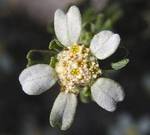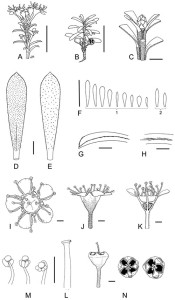 The dates for this year’s It’s All About the Plants seminar series have now been fixed. The talks will again take place in the Botanic Garden’s Goodman Building Lecture Theatre (Hackney Road, Adelaide) on the first Tuesday of every month from 10:00–12:00, except July, August and December. In August, the State Herbarium of South Australia plans a mini-symposium to celebrate its 60th anniversary.
The dates for this year’s It’s All About the Plants seminar series have now been fixed. The talks will again take place in the Botanic Garden’s Goodman Building Lecture Theatre (Hackney Road, Adelaide) on the first Tuesday of every month from 10:00–12:00, except July, August and December. In August, the State Herbarium of South Australia plans a mini-symposium to celebrate its 60th anniversary.
The following speakers have agreed to give talks in 2015:
- 14 Apr. — Ed Biffin (State Herbarium)
- 5 May — Alexis Tindale (South Australian Museum)
- June (TBC) — Teresa Lebel (National Herbarium of Victoria)
- 8 Sep. — Jose Facelli (The University of Adelaide)
- Nov (TBC) — Doug Fotheringham (State Herbarium, our newest Hon. Research Associate)
Hope to see you all.




You must be logged in to post a comment.